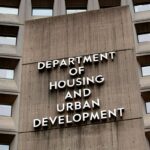The U.S. Department of Housing and Urban Development (HUD) has released its 2023 Annual Homeless Assessment Report: Part 1: Point-in-Time Estimates, an annual snapshot of the number of individuals in shelters, temporary housing, and in unsheltered settings.
The report found more than 650,000 people were experiencing homelessness on a single night in January 2023, a 12% increase from 2022. The report also includes the Housing Inventory Count of shelter and housing resources to serve people experiencing homelessness.
The rise in homelessness at the beginning of 2023 continued a pre-pandemic trend from 2016 to 2020, when homelessness also increased. President Biden’s American Rescue Plan (ARP)–the largest single-year investment in preventing and ending homelessness in U.S. history–prevented a rise in homelessness between 2020 and 2022. Many of these ARP resources have now expired or wound down, which has contributed to the increase in homelessness.
In breaking down the populations most impacted, the 2023 Annual Homeless Assessment Report: Part 1: Point-in-Time Estimates found:
People who identify as Black, African American, or African, as well as Indigenous people (including Native Americans and Pacific Islanders), continue to be overrepresented among the population experiencing homelessness. People who identify as Black made up just 13% of the total U.S. population and 21% of the U.S. population living in poverty but comprised 37% of all people experiencing homelessness and 50% of people experiencing homelessness as members of families with children.
People who identify as Asian or Asian American experienced the greatest percentage increase among all people experiencing homelessness. Between 2022 and 2023, there was a 40% increase in the number of people experiencing homelessness who identify as Asian and Asian American (3,313 more people). This increase was greatest among all racial and ethnic groups experiencing unsheltered homelessness, where the number of people identifying as Asian or Asian American increased by 64% between 2022 and 2023 (2,774 more people).
The largest numerical increase in people experiencing homelessness was among people who identify as Hispanic or Latin, increasing by 28% or 39,106 people between 2022 and 2023. People who identify as Hispanic or Latin made up 55% of the total increase in people experiencing homelessness between 2023 and 2023. Most of this increase (33,772 people) was for people experiencing sheltered homelessness.
In the nearly one year since the 2023 Point-in-Time Count was conducted, the Biden Administration has taken sweeping new steps that are yielding results: through implementation of the Housing Supply Action Plan, more apartments are on track to be built this year than any year on record; this week, HUD announced that it has helped more than 424,000 households connect to homeless support services, exit homelessness, or avoid homelessness altogether in 2023; and earlier this month, VA announced that it has housed more than 38,000 homeless veterans-meeting its goal for 2023 two months early.
“Homelessness is solvable and should not exist in the United States,” said HUD Secretary Marcia L. Fudge. “From day one, this Administration has put forth a comprehensive plan to tackle homelessness and we’ve acted aggressively and in conjunction with our federal, state, and local partners to address this challenge. We’ve made positive strides, but there is still more work to be done. This data underscores the urgent need for support for proven solutions and strategies that help people quickly exit homelessness and that prevent homelessness in the first place.”
HUD indicates that the rise in overall homelessness is largely due to a sharp rise in the number of people who became homeless for the first time. Between federal fiscal years 2021 and 2022, the number of people who became newly homeless increased by 25%, even as the number of people who exited homelessness to permanent housing increased by 8%. This rise in first-time homelessness is likely attributable to a combination of factors, including but not limited to, the recent changes in the rental housing market and the winding down of pandemic protections and programs focused on preventing evictions and housing loss. Most notably, rental housing conditions were extraordinarily challenging in the year preceding the January 2023 PIT count. This rate of rent growth has now moderated thanks to housing under construction becoming available to rent in the coming year, but the supply shortage of 2022 likely contributed to this increase in rents and homelessness in 2022.
In the latter portion of 2023, the median U.S. asking rent declined 2.1% year-over-year, specifically in November to $1,967—the biggest annual drop since February 2020—according to a new report from Redfin, representing a 0.6% decline in asking rents since October.
The rental market has lost momentum over the last-year-and-a-half, in large part because there are more apartments on the market—the result of a building boom in recent years. This jump in supply has left many landlords struggling to fill vacancies, motivating them to drop asking rents in some cases.
The Biden Administration’s pandemic-era protections and programs such as the scaling of additional Emergency Rental Assistance, and implementation of the enhanced Child Tax Credit and Earned Income Tax Credit prevented evictions and helped to prevent a spike in homelessness in 2021 even amidst worsening housing needs. The Administration has partnered with state and local leaders across the country to support their efforts. Today the Biden-Harris Administration is releasing fact sheets showing how each state has benefitted from historic investments across key programs. These investments are in addition to sweeping new efforts across the Administration to increase housing supply, lower costs, and protect renters, including through the first-ever Housing Supply Action Plan and Blueprint for a Renters Bill of Rights.
President Biden’s FY2024 Budget calls for Congress to make investments to lower rental costs and address homelessness, including guaranteed vouchers for low-income veterans and youth aging out of foster care-two groups at higher risk of homelessness.
Click here to read the full report, 2023 Annual Homeless Assessment Report: Part 1: Point-in-Time Estimates.






